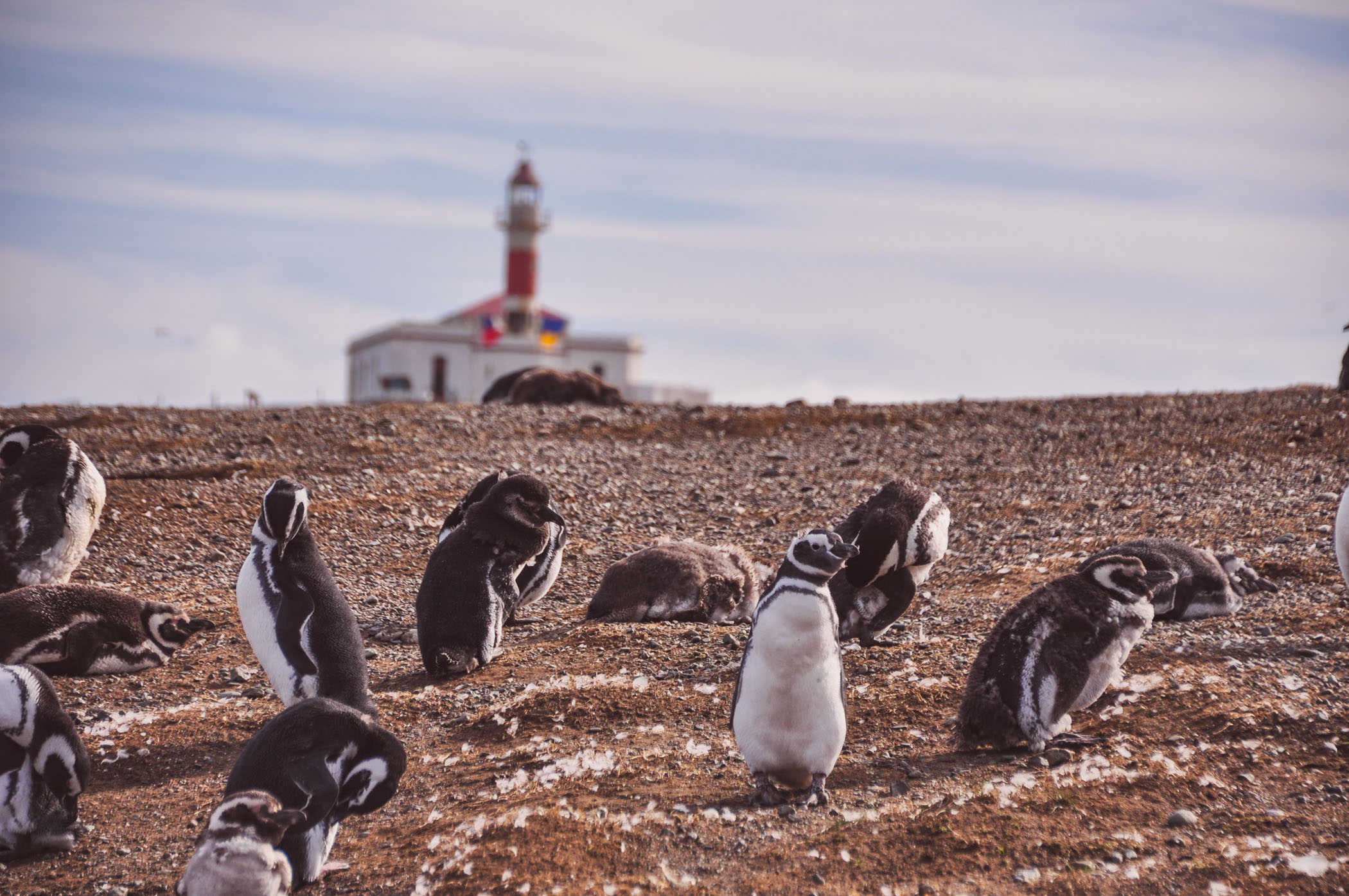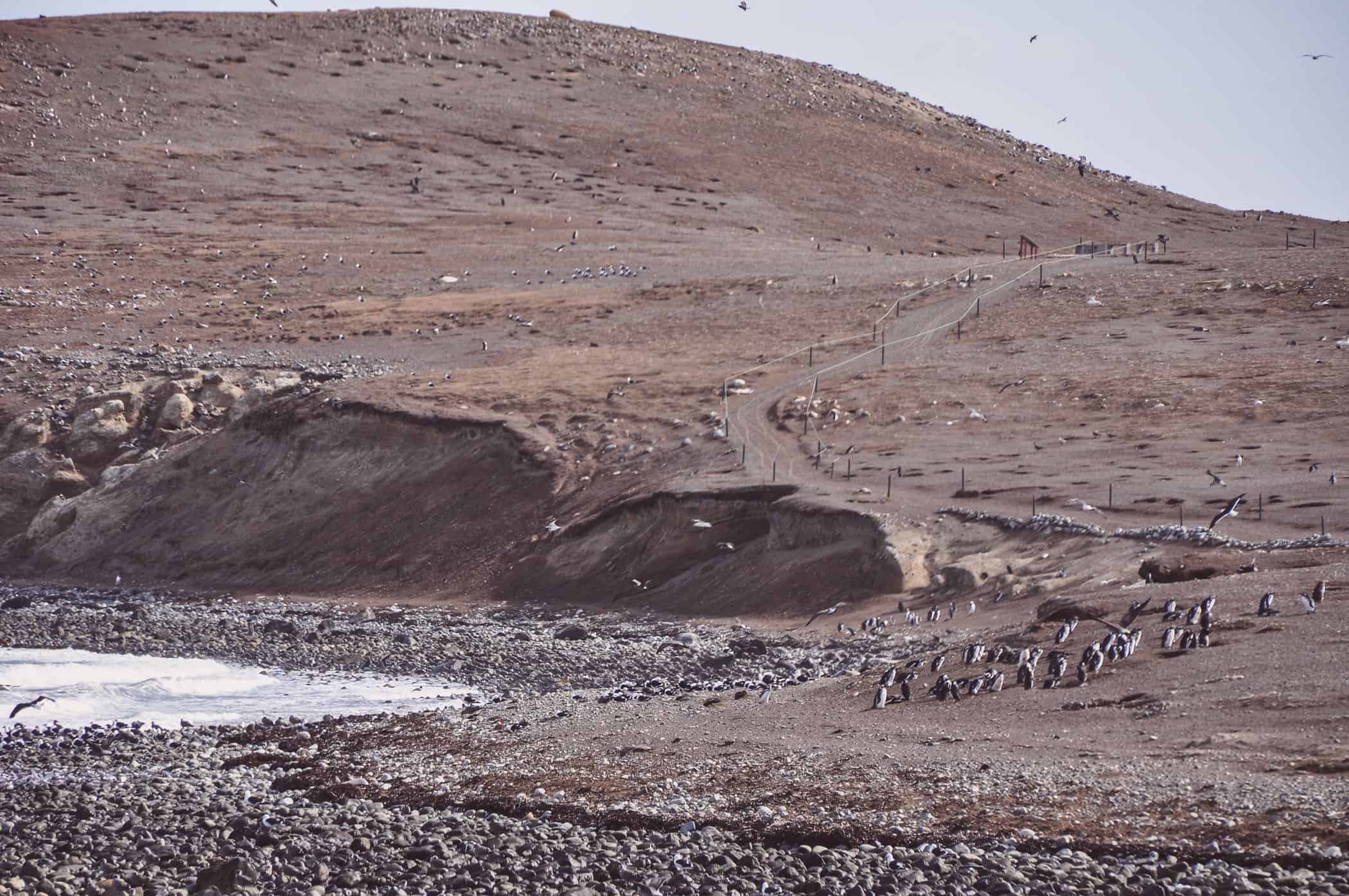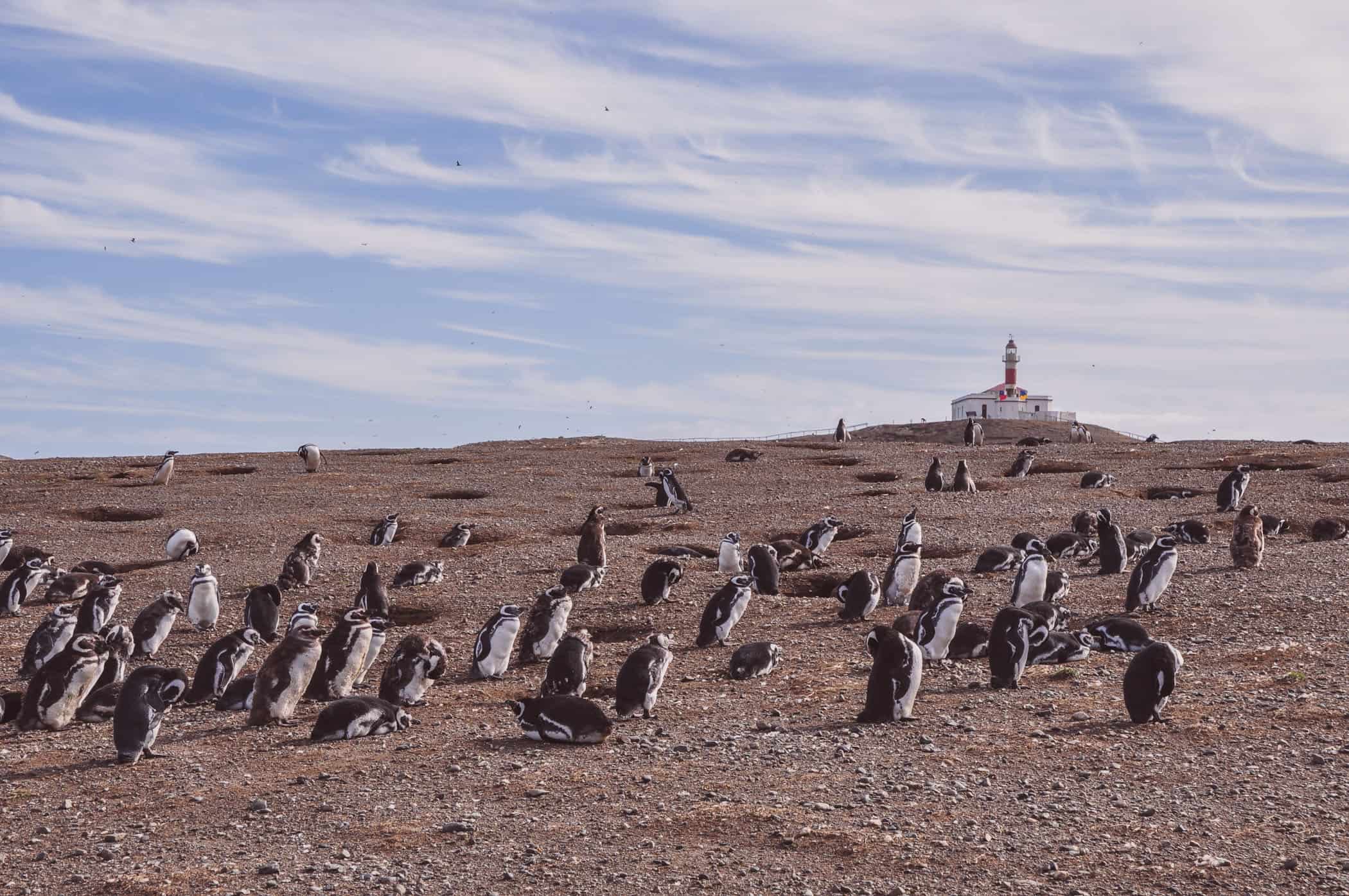Travel Guide | Isla Magdalena, Punta Arenas | Chile
Isla Magdalena: A visit to the most accessible Magellanic penguin rookery in Patagonia
Text | Anninka Kraus
Photography | Tobias Kraus

Chile Patagonia
Magdalena Island is one of the largest nesting sites for Magellanic penguins in Chile and home to around 60’000 nesting pairs of penguins.
The island is a Natural Monument (Los Pingüinos) managed by CONAF (Corporación Nacional Forestal) and conveniently located just off the coast of Punta Arenas in the Straits of Magellan, making it one of the most accessible Magellanic penguin rookeries in the world.
On the tiny island, you follow a marked path that winds between their burrows and watch penguins clumsily waddle past you, playful and completely fearless, and other seabirds, such as gulls and cormorants, screeching and flapping their wings as they compete for space.







Magellanic Penguins on Isla Magdalena against the backdrop of the iconic lighthouse.
what to expect.
One of the largest breeding sites for Magellanic penguins in Chile, conveniently located just off the coast of Punta Arenas
Around 120.000 penguins dig burrows in the soft ground on Magdalena Island, mate, breed and prey on crustaceans for themselves and their offspring
February is the best time to visit if you want to see cute chicks covered in fluffy down feathers
It’s hilarious to watch the little fellows flounder ashore and strut along the shore with their rigid wannabe-wings and oversized bottoms
location & visitor information.
How to get to Magdalena Island (Isla Magdalena): Magdalena Island (Isla Magdalena) is a small island approx. 35 kilometres off the coast of Punta Arenas in the Straits of Magellan and there are two ways to get to Magdalena Island. You can take the public ferry (55,000 CLP or US$ 80) that leaves from Punta Arenas at 8am or join an organised tour on a private speed boat (approx. 1-hour ride one-way from Punta Arenas).
The public ferry is cheaper (buy your tickets online but takes 2 hours one-way and you only have an hour to walk around on the island. For us, one hour on the island was enough (it’s not that big), but if you think you might want more time with the penguins, transfer from/to Punta Arenas included, and a knowledgeable tour guide, consider joining an organised tour (operating October to March). The ferry to Magdalena Island leaves from Tres Puentes Pier next to the ticket office, a 10-15min drive north of Punta Arenas city centre.
When to visit the penguin colony on Magdalena Island: The colony is only breeding and based here between September/October and March. During the rest of the year, tours to the island will not be in operation. The best time to visit is in February when chances are high that you’ll see incredibly cute baby chicks covered in fuzzy down feathers.
The Magellanic penguin: Named after Portuguese explorer Ferdinand Magellan, the Magellanic penguin is a medium-sized (60-75cm tall) South American penguin at home in coastal Patagonia.
While much smaller than its stereotype penguin brother in Antarctica, the king penguin, the Magellanic penguin is just as fascinating to watch – in the water they are agile, courageously breasting the waves and diving whereas on land they clumsily waddle around on their short legs.
What to expect from your visit to Magdalena Island (Isla Magdalena): Your visit to the island basically involves a boat ride (public ferry or private speedboat) from Tres Puentes Pier in Punta Arenas to the island (taking 1 hour on the speedboat, 2 hours on the ferry), 1-2 hours to explore the island, and a boat ride back. Taking the ferry, the trip should take approx. 5 hours, but may take longer depending on weather conditions.
If you’re taking the public ferry, you’re allowed just one hour ashore, on organised tours your stay on the island may be slightly longer. On the island you’ll follow a set path that winds between the burrows and we thought an hour was sufficient time to watch the penguins and seabirds without feeling rushed. As tempting as it may be, remember that penguins are wild animals and you should never try to pet one. The national park crew watches visitors closely to makes sure everyone abides by the rules.
Our experience on Magdalena Island
We set foot on a brownish lump of dirt, completely barren without any noteworthy vegetation. Isla Magdalena is uninhabited but for the birds and Magellanic penguins.
Just how many breeding pairs occupy the flat island differs between sources but around 60.000 pairs dig burrows in the soft ground, mate, breed and prey on crustaceans for themselves and their offspring in the sea. In the water they are agile, courageously breasting the waves and diving. But watching them flounder ashore was hilarious: first the head surfaced between whitecaps, furiously bobbing up and down then disappeared again.
After quite a few such attempts the penguins’ slow and erratic movements drifted closer to the shore, heads resurfaced and disappeared in the rippling sea several times, before its tiny feet touched the pebbles. The little ones appeared to somersault, knocked about by the waves, and hit the shore until their small Hobbit feet found enough grip to waddle from the surf.
The Magellanic penguin is much smaller than I expected, thinking of its stereotype penguin brother in Antarctica that grows to well over one meter. Despite their ungainly, torpedo-shaped appearance they strutted along the shore quite elegantly and very erect, showing off a classy black and white tailcoat pattern.
Their short legs clumsily waddled past us a few feet away, presenting their rigid wannabe-wings and oversized bottoms. We cheered them on when they bravely stood up to several species of huge, aggressive sea gulls – dreadful creatures – that were challenging each other for space, screeching and beating their wings.
The impression was not unlike a petting zoo as we walked in the midst of this insular miniature community in cold wind for an hour, so close to the penguins, that reaching out, I could have touched their smooth plumage.